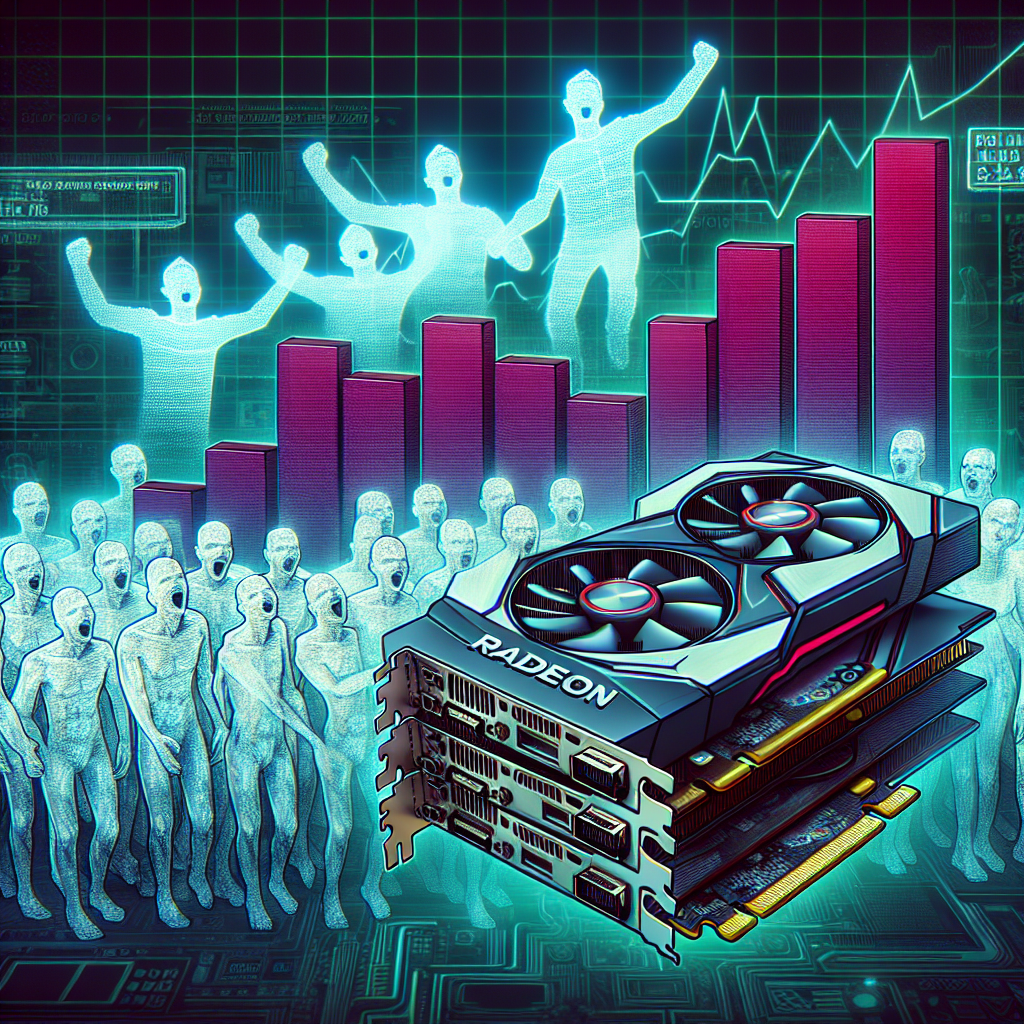Insights from Steam Hardware Survey on PC Gaming Trends
The latest findings from Valve’s Steam Hardware Survey have shed light on current trends among PC gamers. Notably, Windows 11 is gradually carving out its niche, showing a steady uptick in adoption as it gains ground against the prevalent Windows 10. In tandem with operating system updates, there’s a clear trend of gamers equipping their rigs with more robust hardware. The survey indicates a rise in the average number of CPU cores and an expansion in the system RAM capacity, suggesting that players are seeking more power and smoother performance from their gaming setups.
However, the distribution of AMD Radeon graphics cards presents a curious case. Despite AMD’s assertions of increased sales for its Radeon products, the Steam Hardware Survey paints a different picture. The presence of AMD’s latest RDNA 3 cards is notably sparse, with only the high-end Radeon RX 7900 XTX making an appearance. This is in stark contrast to the more frequent sightings of the original RDNA cards, such as the Radeon RX 5700 XT, within the survey data.
AMD Radeon’s Presence in Steam Hardware Survey
The visibility of AMD Radeon RDNA 3 cards within the Steam Hardware Survey is notably low, especially when compared to the original RDNA cards. Despite AMD’s launch of seven models in the RX 7000-series over a span of 13 months, only the top-tier Radeon RX 7900 XTX has been recorded in the survey’s findings. This scarcity stands out against the more established presence of the original RDNA cards, such as the Radeon RX 5700 XT.
| Card Series | Number of Models |
|---|---|
| RX 7000-series | 7 |
| Original RDNA Cards | More than 7 (Exact number not provided) |
The market performance of the RX 7000-series, as suggested by the survey, raises questions about their actual penetration in the gaming community. The limited representation of these newer models in the survey’s statistics could imply a slower adoption rate among gamers or perhaps other market dynamics at play.
Comparison with Nvidia and Radeon’s Success in Other Sectors
When comparing the diversity of Nvidia’s GeForce RTX 40-series to AMD’s offerings, Nvidia appears to have a slightly larger selection with ten models available over a 15-month period. This is in contrast to the seven models from the RX 7000-series by AMD. Despite this, AMD has found considerable success in the handheld PC sector, where Radeon graphics chips are almost universally the choice among devices.
However, the potential biases in Valve’s hardware survey could affect the representation of Radeon 7000-series cards. Factors that might influence the survey’s findings include:
- The undisclosed size of the survey’s sample
- Geographic distribution of the participants
- Market preferences in different regions
- Prevalence of internet/gaming cafes that may favor Nvidia
These elements could skew the data, potentially under-representing the adoption of Radeon’s latest graphics cards in the gaming community.
Analyzing the Data
The data from the Steam Hardware Survey and the 3DMark Results database offer insights into the visibility of RDNA 3 cards. The Steam survey, which has been tracking hardware usage over several months, shows a very limited presence of Radeon RX 7000-series cards. On the other hand, the 3DMark database, which ranks GPUs by popularity based on benchmark results, shows RDNA 3 cards as more visible.
However, the 3DMark figures are influenced by the frequency of benchmark submissions, which could be skewed by a small number of users submitting multiple results. This raises questions about the true popularity of these cards. The discrepancy between AMD’s claims of strong demand for their latest GPUs and the data from these sources suggests that the reality of market performance is complex and not easily captured by any single metric.
Limitations of the data include:
- Unknown sample size in the Steam Hardware Survey
- Potential for multiple submissions by a single user in the 3DMark database
- Lack of transparency regarding the geographic distribution of survey participants
These factors contribute to the challenge of accurately gauging the market penetration of AMD’s Radeon RX 7000-series cards.
Understanding Radeon RX 7000-Series’ Survey Representation
In conclusion, the low representation of Radeon RX 7000-series cards in the Steam Hardware Survey could stem from a variety of factors. It might indicate that the strong demand AMD claims is primarily for the older RX 6000-series rather than the newer models. Alternatively, it could suggest that AMD has been unfortunate with the distribution of Valve’s sampling, or that users are hesitant to participate in the survey.
Another possibility is that the actual market performance of the Radeon RX 7000-series is being misrepresented due to the survey’s limitations, such as sample size and geographic distribution. The implications for AMD’s market performance are significant, as the company’s success in selling its latest GPUs is not as clear-cut as it might seem. The true test of the Radeon RX 7000-series’ popularity and market penetration will continue to unfold as more data becomes available and as AMD’s products have more time to establish themselves in the market.

